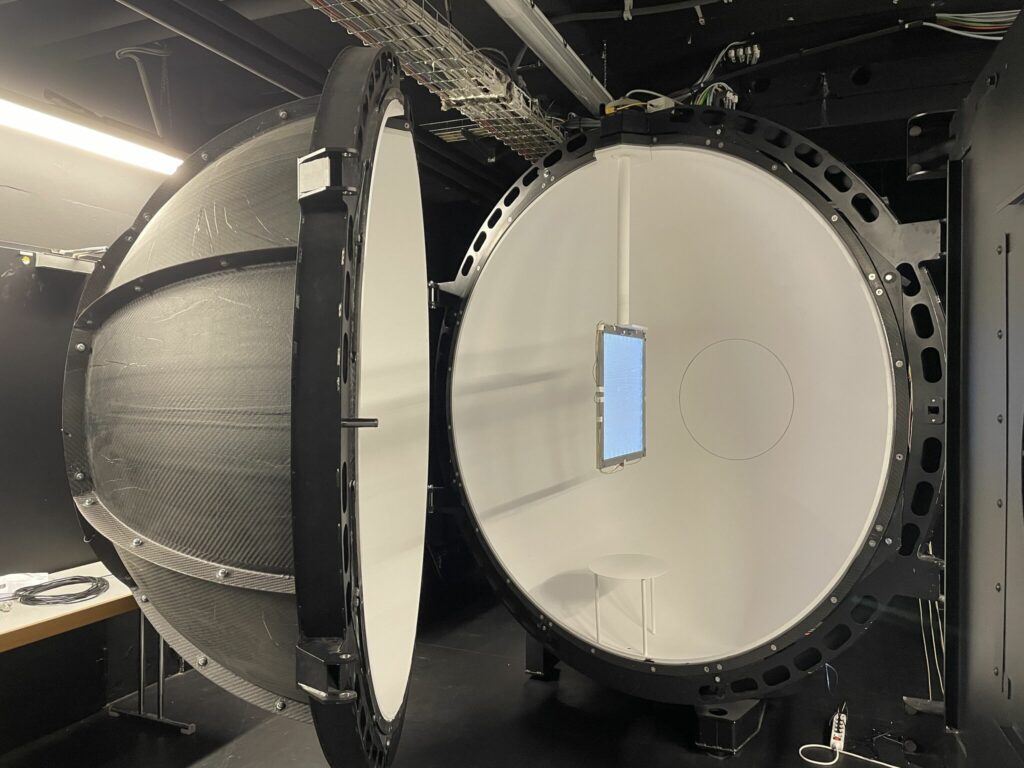Development of GG-LED-Glass
Two-Year Research Project
The COVID-19 pandemic served as a wake-up call in sectors such as healthcare and hospitality regarding the need for new hygiene standards. After a 2-year research collaboration with the renowned Fraunhofer Institute for Building Physics IBP, Fraunhofer Institute for Interfacial Engineering and Biotechnology IGB and Fraunhofer Austria, the Austrian start-up GG-LED-GLASS has introduced a novel antimicrobial glass for combating pathogens on surfaces.
Collaboration
The concept of vertical side coupling in combination with a microstructured glass surface, developed by Fraunhofer IBP, proved to be the best solution after the elaboration of various concepts and several iteration stages in product development. The system design was based on calculations and simulations. The resulting prototypes were evaluated by Fraunhofer IBP and Fraunhofer IGB using measurement technology.

Installed test sample of the structure developed in the UVC project in the Fraunhofer IBP’s Ulbricht sphere in Stuttgart, Germany. © Fraunhofer IBP
Increase in Photocatalytic Activity
The studies showed that structuring photocatalytic-coated glass panes could provide a functional advantage. This enables, in glass panes with approximately 50 cm edge length and one-sided UV coupling, the distribution of UV radiation through structuring in such a way that the photocatalytic activity on the coupling side can be significantly increased compared to an unstructured pane.
At the same time, the UVA emission of the pane remains at a constant level. If, however, the structuring is not executed optimally, the structuring does not offer any advantages in terms of photokatalytic activity, and the UVA emission is significantly increased.

